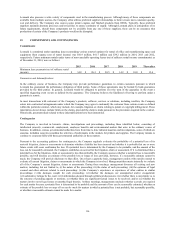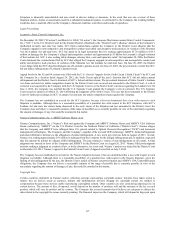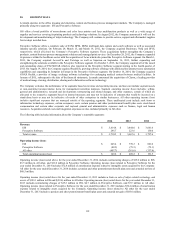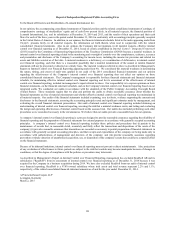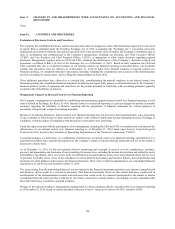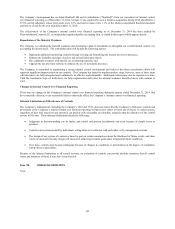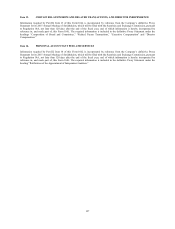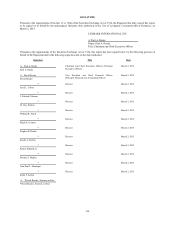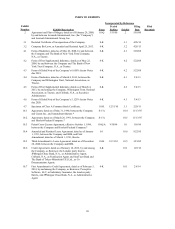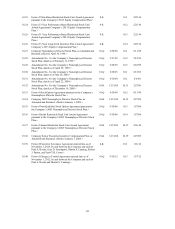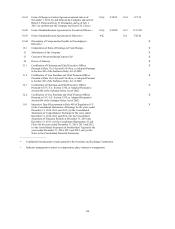Lexmark 2014 Annual Report Download - page 129
Download and view the complete annual report
Please find page 129 of the 2014 Lexmark annual report below. You can navigate through the pages in the report by either clicking on the pages listed below, or by using the keyword search tool below to find specific information within the annual report.The Company’s management has excluded ReadSoft AB and its subsidiaries ("ReadSoft") from our assessment of internal control
over financial reporting as of December 31, 2014, because it was acquired by us in a business acquisition during 2014. ReadSoft is a
97.8% owned subsidiary whose total assets were 2.2% and total revenues were 1.1% of the related consolidated financial statement
amounts as of and for the year ended December 31, 2014.
The effectiveness of the Company’s internal control over financial reporting as of December 31, 2014 has been audited by
PricewaterhouseCoopers LLP, an independent registered public accounting firm, as stated in their report which appears herein.
Remediation of the Material Weakness
The Company is evaluating the material weakness and developing a plan of remediation to strengthen our overall internal control over
accounting for income taxes. The remediation plan will include the following actions:
Implement additional monitoring controls through revising and formalizing the income tax review processes,
Enhance the formality and rigor of review and reconciliation procedures,
Hire additional resources with specific tax accounting expertise, and
Upgrade the tax provision software to enhance the use of systematic processes
The Company is committed to maintaining a strong internal control environment and believes that these remediation efforts will
represent significant improvements in our controls. The Company has started to implement these steps, however, some of these steps
will take time to be fully integrated and confirmed to be effective and sustainable. Additional controls may also be required over time.
Until the remediation steps set forth above are fully implemented and tested, the material weakness described above will continue to
exist.
Changes in Internal Control over Financial Reporting
There were no changes in the Company’s internal control over financial reporting during the quarter ended December 31, 2014, that
have materially affected, or are reasonably likely to materially affect, the Company’s internal control over financial reporting.
Inherent Limitations on Effectiveness of Controls
The Company’s management, including the Company’s CEO and CFO, does not expect that the Company’s disclosure controls and
procedures or the Company’s internal control over financial reporting will prevent or detect all error and all fraud. A control system,
regardless of how well conceived and operated, can provide only reasonable, not absolute, assurance that the objectives of the control
system will be met. These inherent limitations include the following:
Judgments in decision-making can be faulty, and control and process breakdowns can occur because of simple errors or
mistakes.
Controls can be circumvented by individuals, acting alone or in collusion with each other, or by management override.
The design of any system of controls is based in part on certain assumptions about the likelihood of future events, and there
can be no assurance that any design will succeed in achieving its stated goals under all potential future conditions.
Over time, controls may become inadequate because of changes in conditions or deterioration in the degree of compliance
with policies or procedures.
Because of the inherent limitations in all control systems, no evaluation of controls can provide absolute assurance that all control
issues and instances of fraud, if any, have been detected.
Item 9B. OTHER INFORMATION
None
125



